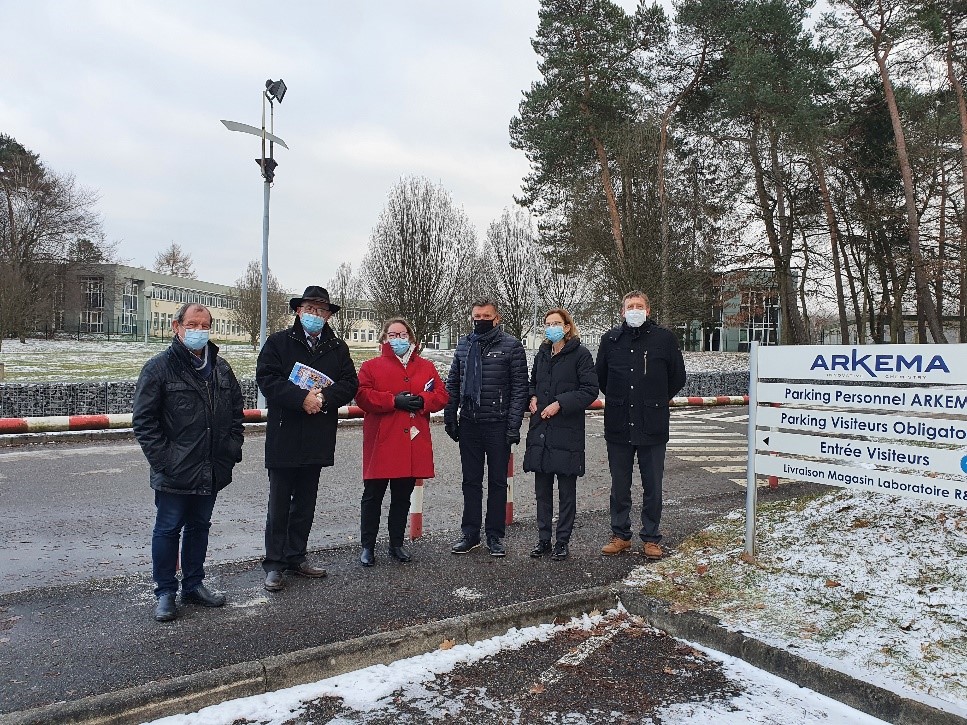| Visite de la plateforme de Carling, des membres du Bureau de la CLE du SAGE Bassin Houiller De par le rôle majeur que joue la plateforme CHEMESIS sur les eaux souterraines et superficielles de la Rosselle, le SAGE a organisé une visite des installations pour mieux comprendre les enjeux auxquels sont soumis les acteurs de la plateforme CHEMESIS, vis-à-vis de son développement, et de la gestion de l’eau. Une association, réunissant tous les industriels de la plateforme L’association CHEMESIS a été créée en 2013 pour accompagner les mutations qui s’opéraient sur la plateforme. Sa mission est d’améliorer la compétitivité industrielle et l’attractivité du territoire pour accueillir de nouveaux investisseurs. De nombreux chantiers sont en cours, notamment autour d’un schéma vertueux de gestion du cycle de l’eau. CHEMESIS est l’une des rares plateformes du Grand Est à pouvoir accueillir à la fois des activités classées Seveso, ainsi que des activités de recherche et de développement. La plateforme a accueilli récemment METEX-NOOVISTA, leader mondial des procédés de fermentation. A venir, AFYREN-NEOXY qui devrait démarrer son activité de biochimie au premier trimestre 2022. CHEMESIS, partenaire dans le projet de territoire du Warndt Naborien Suite à la décision de l’Etat français de fermer la Tranche charbon (Tranche 6) de la centrale thermique Emile Huchet, les acteurs du territoire se sont engagés dans un projet de territoire du Warndt Naborien, pour aider le territoire dans ses projets de reconversion industrielle et pour soutenir la mutation économique de ce secteur déjà fragilisé par la fermeture des dernières mines de charbon. |
 De Gauche à droite : M. BALLEVRE, vice-président de la CLE, M. MARTIN, Président de le CLE, Mme LEROY, TPF, M. ADIER, vice-président de la CLE, Mme LACOUR-TEITGEN, ARKEMA et M. FABREGUE, CHEMESIS De Gauche à droite : M. BALLEVRE, vice-président de la CLE, M. MARTIN, Président de le CLE, Mme LEROY, TPF, M. ADIER, vice-président de la CLE, Mme LACOUR-TEITGEN, ARKEMA et M. FABREGUE, CHEMESIS |